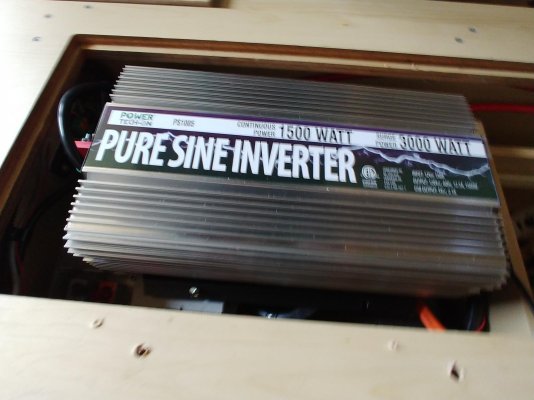stevanpierce@gmail.com
Advanced Member
I was reading a few of the threads on here, of which got me to thinking of extending my off-grid action. I am sure there are a lot of other factors I have yet to think of when it comes the idea I had.
So, I let my deep cycle batteries die a sloooow death. I suspect that something was left on or had a phantom power leak somewhere, more than likely first one.
I have a stock 2010 Roadtrek 210. The batteries that were for the coach are Napa 8144's and battery monitoring system is what came with the coach. Since the batteries are dead and Napa has been anything but helpful, have decided to take my money elsewhere....another story another time tbh.
After running some calculations, I found with the basics running in the rig would eat up 30A, with 230AH, equates to ~7.5 hr of power. Using the following for calc, https://power-calculation.com/battery-storage-calculator.php
I was thinking of getting two (2) Duracell Ultra 6V Deeps (SLIGC125), run a series. https://www.batteriesplus.com/productdetails/sligc125 which would add 0.25hr for total of ~7.75hr of off grid since I would achieve.
However, I ran across a site that talked about a battery bank in a series and parallel. So, if I had four (4) SLIGC125's configured in this manner, I would in effect end up w ~15.5 hr of off grid.
Then I was thinking of getting the Victron Energy BMV-712 to remotely monitor the system, https://www.victronenergy.com/battery-monitors/bmv-712-smart
For the location of the additional two (2) batteries, I was thinking of placing them on the opposite side of where the coach batteries are located, in the long pull-out draw. (The same drawer/storage that the hose from the macerator is stored.)
Now the cost: (Batteries $700) + (Battery Monitor $200) + (Cables $100) + (Misc $50) = $1050 * (110% because it usually ends up being at least that much more) = $1175
This does not account for me driving the rig and charging the batteries. Nor does it account for me running the generator to charge them. I'd also hasten to say that all 30A would be run all the time for ~15.5hr. (Just thought I would head those questions off at the pass )
)
Would a solar setup be a better idea given the above? (If I went solar then would just keep a pair of the Duracell flooded SLIGC125's.) I am not really looking to spend all that much $ tbh....just want something practical. I am okay running just the fridge and using a headlamp at night and occasional tv/dvd action.
So, I let my deep cycle batteries die a sloooow death. I suspect that something was left on or had a phantom power leak somewhere, more than likely first one.
I have a stock 2010 Roadtrek 210. The batteries that were for the coach are Napa 8144's and battery monitoring system is what came with the coach. Since the batteries are dead and Napa has been anything but helpful, have decided to take my money elsewhere....another story another time tbh.
After running some calculations, I found with the basics running in the rig would eat up 30A, with 230AH, equates to ~7.5 hr of power. Using the following for calc, https://power-calculation.com/battery-storage-calculator.php
I was thinking of getting two (2) Duracell Ultra 6V Deeps (SLIGC125), run a series. https://www.batteriesplus.com/productdetails/sligc125 which would add 0.25hr for total of ~7.75hr of off grid since I would achieve.
However, I ran across a site that talked about a battery bank in a series and parallel. So, if I had four (4) SLIGC125's configured in this manner, I would in effect end up w ~15.5 hr of off grid.
Then I was thinking of getting the Victron Energy BMV-712 to remotely monitor the system, https://www.victronenergy.com/battery-monitors/bmv-712-smart
For the location of the additional two (2) batteries, I was thinking of placing them on the opposite side of where the coach batteries are located, in the long pull-out draw. (The same drawer/storage that the hose from the macerator is stored.)
Now the cost: (Batteries $700) + (Battery Monitor $200) + (Cables $100) + (Misc $50) = $1050 * (110% because it usually ends up being at least that much more) = $1175
This does not account for me driving the rig and charging the batteries. Nor does it account for me running the generator to charge them. I'd also hasten to say that all 30A would be run all the time for ~15.5hr. (Just thought I would head those questions off at the pass
Would a solar setup be a better idea given the above? (If I went solar then would just keep a pair of the Duracell flooded SLIGC125's.) I am not really looking to spend all that much $ tbh....just want something practical. I am okay running just the fridge and using a headlamp at night and occasional tv/dvd action.



